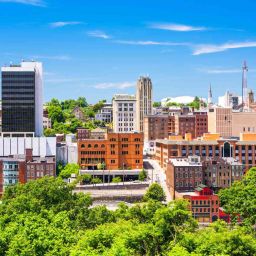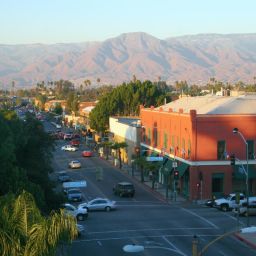
The global coffee market thrives on diversity, with coffee beans’ origin playing a pivotal role in defining the final cup’s aroma, flavor, and quality. The journey of coffee, from seed to cup, is influenced by myriad factors, with the beans’ geographic origin at its heart.
As consumers’ appreciation for specialty coffee grows, the significance of coffee beans’ origin has never been more pronounced. Understanding where and how coffee is grown helps in appreciating the unique profiles of different brews and the artistry behind coffee cultivation.
Key Takeaways
- Geographic Location, Altitude, and Climate: The quality of coffee beans is deeply influenced by their geographic location. Altitude and climate play crucial roles in the development of the beans’ flavor profile, with higher altitudes generally yielding beans with more complex flavors and acidity.
- Flavor Profiles Among Top Coffee-Producing Countries: Each coffee-producing country offers unique flavor profiles. For instance, Ethiopian coffees are known for their floral and fruity notes, while Brazilian coffees often have a nutty, chocolatey quality.
- The Role of Farming Practices: Both traditional and innovative farming practices significantly impact coffee quality. Sustainable practices, such as shade-growing and organic farming, not only support environmental health but also enhance the beans’ natural flavors.
Where Are The Best Coffee Beans Grown: An Overview
In the quest for the world’s best coffee beans, a few countries consistently stand out due to their ideal growing conditions and distinctive flavor profiles. Brazil, the world’s largest coffee producer, is renowned for its broad range of flavors, often characterized by chocolatey and nutty notes, suitable for both casual drinkers and coffee aficionados alike. Colombia, with its rich coffee heritage, produces beans known for their smooth, mild flavor and a hint of nuttiness, attributed to the country’s varied terrain and microclimates.
Ethiopia, the birthplace of coffee, offers an extraordinary range of flavors, from floral and citrusy to wild and fruity, thanks to its diverse growing regions and heirloom Arabica varieties. Guatemala, with its volcanic soils and high altitudes, contributes beans that are often described as having a complex flavor profile with bright acidity, chocolate, and fruit notes.
These countries, among others, are celebrated for their contribution to the global coffee scene, providing beans that cater to an array of palates and preferences. The unique combination of geographic location, altitude, climate, and farming practices in each region ensures that every cup of coffee offers a distinct experience, inviting coffee lovers to explore the rich tapestry of flavors that the world of coffee has to offer.
Deep Dive into Coffee Growing Regions: The Americas
The Americas are home to some of the world’s most renowned coffee-producing countries, each offering unique flavor profiles and growing conditions. This section explores the distinctive characteristics of coffee production in Brazil, Colombia, Costa Rica, and Guatemala.
Brazil: The Coffee Powerhouse
Brazil stands as the world’s largest coffee producer, a title it has held for over a century. The country’s vast size allows for a wide range of climates and terrains, accommodating both Arabica and Robusta beans. Brazilian coffee is often noted for its chocolatey, nutty flavors, with a broad appeal that makes it a staple in blends.
The regions of Minas Gerais, São Paulo, and Espírito Santo are particularly significant, with Minas Gerais alone responsible for a significant portion of the country’s output. Brazilian coffees tend to have a lower acidity, offering a smooth, pleasant cup that serves as the backbone of many espresso blends.
Colombia: The Land of Diversity
Colombia’s coffee is celebrated for its quality and the unique profiles offered by its diverse growing regions. With its equatorial climate and varied elevations, Colombia produces coffee with a wide range of flavor notes, from fruity and floral to sweet and nutty. The country’s commitment to hand-picked, Arabica beans contributes to the high quality of its coffee.
Regions such as Antioquia, Huila, and Nariño each bring something different to the table, with Nariño’s high-altitude coffees being particularly prized for their bright acidity and complex flavors.
Costa Rica: The Pioneer of Sustainability
Costa Rica’s coffee industry is noted for its environmental sustainability and high-quality beans. The country’s coffee is characterized by a clean, mild flavor profile with bright acidity and fruity notes, thanks in part to the volcanic soil and ideal climate conditions.
Costa Rica was among the first to embrace the micro-mill revolution, allowing producers to focus on quality over quantity. The Tarrazú region is especially renowned, producing coffees that are often considered the epitome of Costa Rican excellence.
Guatemala: A Symphony of Flavors
Guatemala’s unique geography, with its mountains, volcanoes, and varied climates, contributes to the country’s ability to produce coffees with a wide range of flavor profiles. From the chocolatey, full-bodied coffees of Huehuetenango to the bright, citrusy beans of Antigua, Guatemala’s coffees are as diverse as they are delightful.
The country’s focus on shade-grown coffee not only preserves its natural biodiversity but also produces beans with more nuanced flavors. Guatemala’s commitment to quality and its unique terroir make it a favorite among specialty coffee enthusiasts.
These regions in the Americas demonstrate the importance of geographic location, climate, and cultivation practices in shaping the flavor profiles of coffee. From Brazil’s chocolatey, nutty beans to Guatemala’s complex, nuanced coffees, the Americas offer a rich tapestry of tastes for the global coffee community to explore.
Africa and the Arabian Peninsula
The coffee culture in Ethiopia and Yemen, along with Jamaica in the Caribbean, stands out for its historical depth and rich flavor profiles that have captivated coffee enthusiasts worldwide.
Ethiopia: The Cradle of Coffee
Ethiopia is often hailed as the birthplace of coffee, with its diverse varieties contributing to the country’s reputation as a producer of some of the world’s most distinctive beans. Ethiopian coffees, such as Yirgacheffe, Sidamo, and Harrar, offer a wide range of flavors, from floral and citrusy to winey and spicy.
The country’s traditional dry-processing method adds to the coffee’s unique fruity flavors and bold character. Ethiopia’s high elevation, climate, and rich biodiversity provide the ideal conditions for growing heirloom Arabica coffee varieties, making each cup a reflection of the region’s natural wealth.
Yemen: Arabian Mocha
Yemen’s contribution to the coffee world, the Arabian Mocha, is revered for its rich history and distinctive taste. Grown in the mountainous regions of Yemen, this coffee is known for its small, round beans and a complex flavor profile that includes chocolatey notes and a slight wine-like acidity.
The traditional terraced farming practices of Yemen, combined with the natural dry-processing method, contribute to the coffee’s unique quality. The Arabian Mocha is a testament to Yemen’s enduring legacy in the history of coffee cultivation and trade.
Jamaica: Premium Beans
Jamaica’s Blue Mountain coffee is among the most sought-after in the world, prized for its mild flavor and lack of bitterness. Grown in the Blue Mountains of Jamaica, this coffee is characterized by its bright acidity, smooth body, and a clean, mild flavor profile, with hints of nut, floral, and sweet herbal notes.
The stringent quality control measures and the limited geographical region for its cultivation ensure the exclusivity and consistent quality of Jamaican Blue Mountain coffee.
Asia and Pacific
The Asia-Pacific region, particularly Indonesia, Vietnam, and China, offers unique contributions to the global coffee scene, from traditional to innovative practices.
Indonesia: Kopi Luwak and Beyond
Indonesia’s coffee is renowned for its broad spectrum of flavors, with Kopi Luwak standing out as one of the most exotic. Produced through a natural process involving the Asian palm civet, Kopi Luwak beans undergo a unique fermentation process inside the animal, resulting in a coffee that is exceptionally smooth with a rich, complex flavor profile.
Beyond Kopi Luwak, Indonesia’s Sumatra, Sulawesi, and Java regions produce coffees that are celebrated for their earthy, full-bodied flavors, and low acidity.
Emerging Coffee Scenes: Vietnam and China
Vietnam has rapidly become the world’s second-largest coffee producer, specializing in Robusta beans that contribute a strong, robust flavor to blends and instant coffees. The country’s innovation in coffee production and brewing techniques, such as the unique egg coffee, showcases its vibrant coffee culture.
China, traditionally known for its tea, is emerging as a significant player in the coffee industry, particularly in the Yunnan province. Here, the focus is on high-quality Arabica beans, with the region’s coffee gaining recognition for its fruity flavors and floral aromas. As the domestic demand for coffee grows, China continues to develop its coffee cultivation, aiming to refine its quality and expand its presence in the global market.
FAQs
How does the origin of coffee beans affect their flavor?
A: The origin of coffee beans plays a crucial role in defining their flavor profile. Factors such as climate, soil type, altitude, and processing methods contribute to unique taste characteristics. For example, Ethiopian beans are known for their floral and fruity notes, while Brazilian beans often have a nutty, chocolatey flavor.
What are the main differences between Arabica and Robusta beans?
A: Arabica beans are prized for their smooth, complex flavor profiles, with higher acidity and lower caffeine content than Robusta. Robusta beans, on the other hand, have a stronger, more bitter flavor, with higher caffeine content and are often used in espresso blends for added body and crema.
How can I choose the right coffee based on flavor profiles?
A: Identify your preference in terms of taste—such as floral, fruity, chocolatey, or nutty flavors—and seek out beans from regions known for those profiles. Experiment with beans from different origins and processing methods (washed, natural, honey) to discover what best suits your palate.
Final Thoughts
Understanding the origin of coffee beans is essential for appreciating the diverse world of coffee. The geographical location where beans are grown significantly influences their taste, aroma, and overall quality, offering a spectrum of flavors that cater to every palate.
From the fruity and floral notes of African coffees to the bold and earthy flavors of Asian and Pacific beans, each region brings its unique characteristics to the table. We encourage coffee enthusiasts to explore coffees from various regions, delving into the rich tapestry of flavors and aromas available.
This exploration not only enhances your coffee experience but also supports the diverse cultures and practices behind every cup. Embrace the journey through the world of coffee and discover the remarkable influence of origin on your favorite brew.









